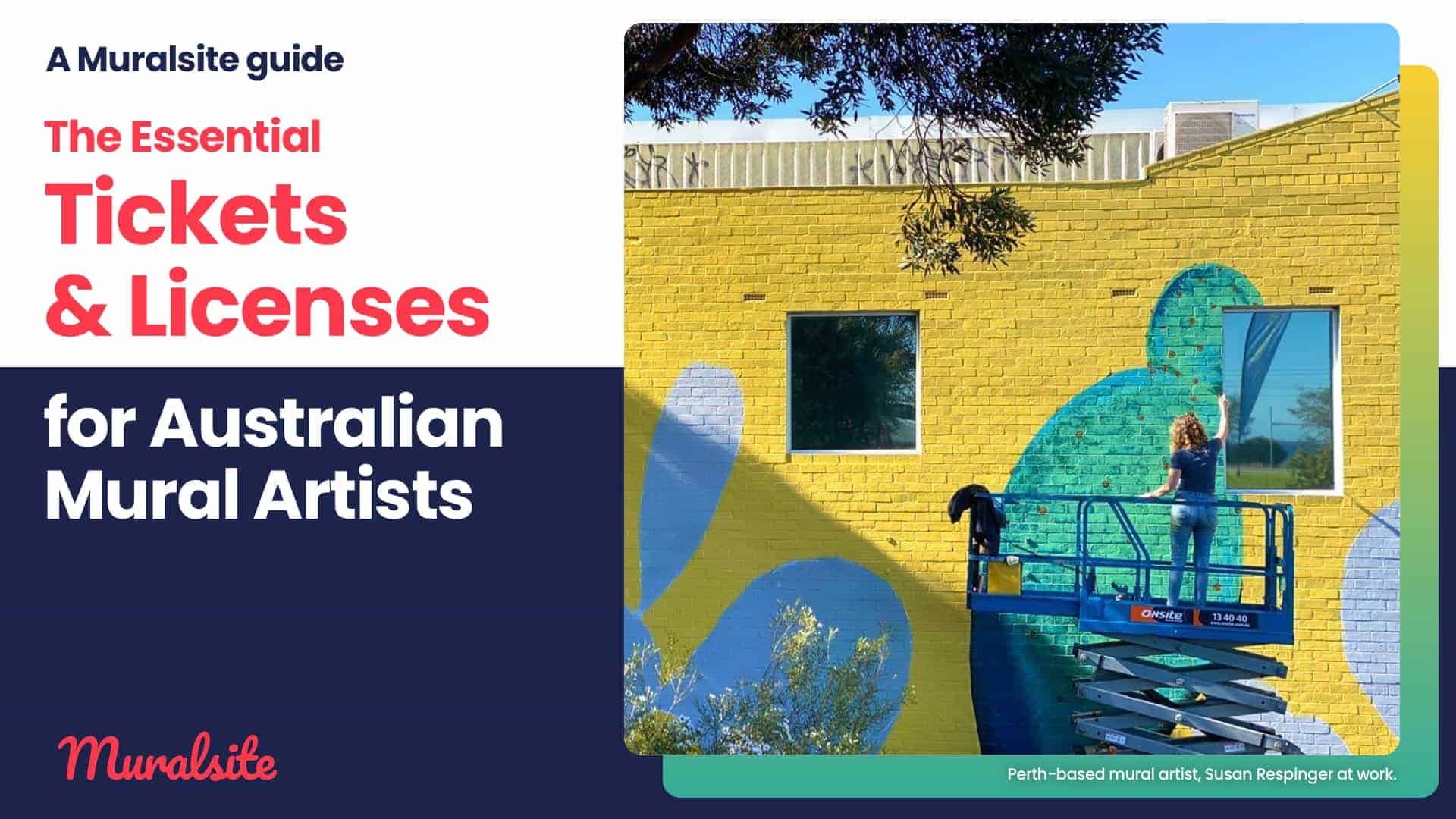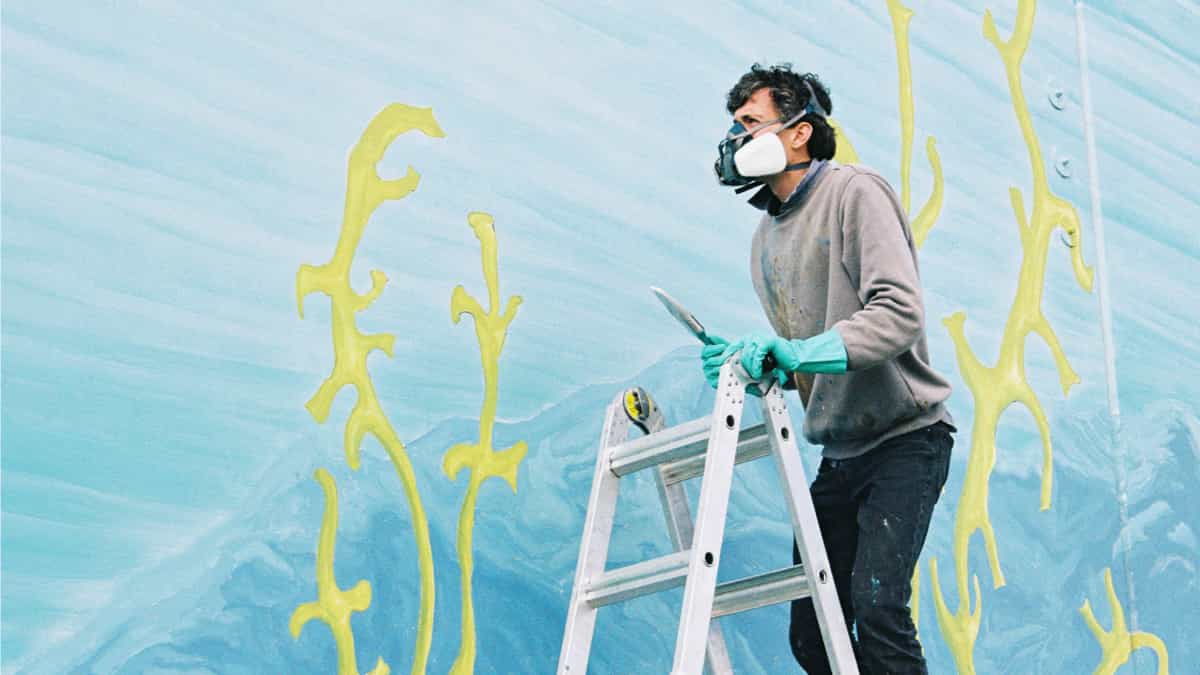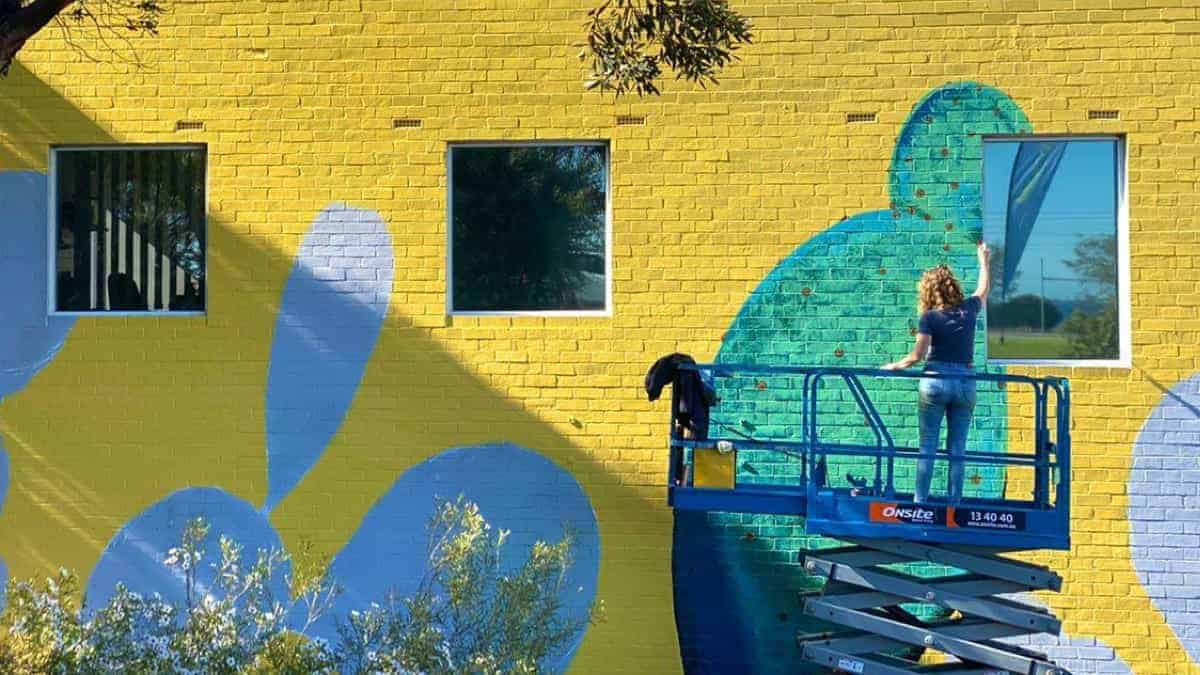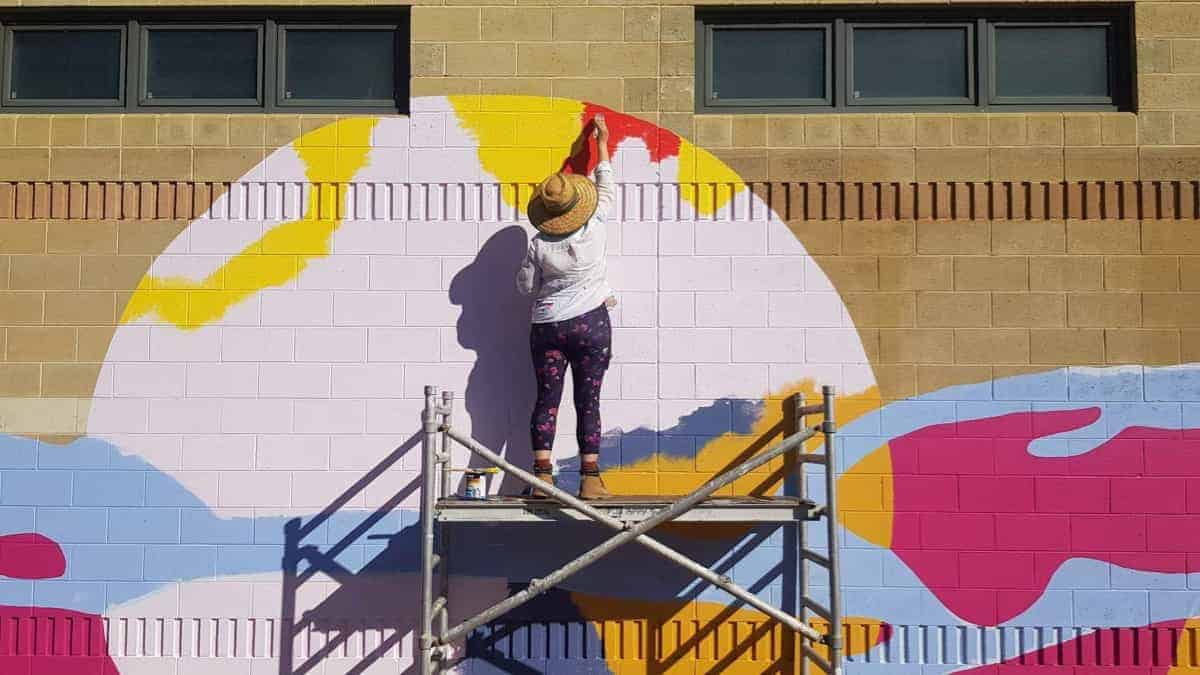The Essential Tickets & Licenses for Australian Mural Artists
- 15 min read

Table of Contents
Introduction
Heights—it’s not all about sky-high skyscrapers and dizzying towers. In reality, most injuries occur less than three meters above the ground.
As a mural artist, you may or may not think of yourself as a risk-taker, but working at heights is a shaky game and a leading cause of serious injury and even death in Australia.
Neither your art nor deadlines should come at the cost of your safety and that of your contractors.
Whether you’re working on a busy construction site or beautifying a private residence, it’s crucial that everyone involved holds the appropriate training and license to stay safe and compliant.
The risks of non-compliance are high, from penalties and fines to a damaged reputation and loss of business.
All the tickets and licenses covered here are nationally recognised. They can be used anywhere in the country – which is good to know if you’re a professional mural or graffiti artist looking to do projects across Australia.
Remember to choose a registered training organisation (RTO) approved by your relevant state or territory to conduct your selected training.
So, to help you stay safe and compliant, we’ve outlined the essential tickets and licenses for mural artists working at heights:
- The White Card (also referred to as General Construction Induction Training)
- Work Safely at Heights
- Operate Elevating Work Platform UNDER 11m
- Operate Elevating Work Platform OVER 11m
- Scaffolding
Disclaimer: While we have tried our best to provide good research and information, regulations and guidance, we can not guarantee its timeliness or accuracy. We encourage you to verify details before undertaking training or risky work. We don’t take responsibility for any outcomes or decisions made based on the information provided.
We have provided useful links at the end of this article to assist your own research, and you can also contact us for any feedback and corrections.
Tickets VS Licenses
Before we dive in, let’s clarify the difference between these industry terms: ‘ticket’ and ‘license’.
A construction ‘license’ proves you’re qualified to perform a performing specific, often high-risk, tasks that require safety measures, such as operating machinery like scissor lifts, boom lifts, or scaffolding. It’s akin to a driving license and is managed by state-based regulators (SafeWork) under the High-Risk Work Licence scheme.
In contrast, a ‘ticket’ certifies your capacity to work within specific environments, like a construction zone or at elevated heights. It’s essential for anyone operating on raised platforms, irrespective of how often. The ticket indicates you’ve achieved a nationally recognized level of competency in a specific high-risk task or activity.
A ticket refers to a nationally recognised unit of competency. It is a qualification specific to an identified high-risk task or activity.
In essence, a ‘license’ is about the task, and a ‘ticket’ is about the environment.

The White Card
Official Name: CPCWHS1001 – Prepare to work safely in the construction industry,
Type: Ticket to work on construction sites
What you’ll learn: Essential health and safety practices for working safely in the construction industry
Where can you use it: Each state and territory issues its own White Card, but they are nationally recognised
Course delivery: Online or In-Person, depending on your state or territory
Length: 4-6 hours
The White Card, also known as the General Construction Induction Training (GCIT), is a must-have ticket if you are going to work on any construction site in Australia.
The white card demonstrates your awareness and knowledge of health and safety, ensuring you can work safely and prevent harm to yourself and others.
The White Card covers topics such as:
- Legislative requirements for health and safety in construction work
- Identifying construction hazards and implementing risk control methods
- Procedures for health and safety communication and reporting
- Addressing incidents and emergency situations
- Proper selection and use of Personal Protective Equipment (PPE)
The training requires hands-on practice using your own Personal Protective Equipment (PPE), such as a hard hat, high-visibility vest, safety glasses, and earplugs/muffs, which you must bring.
Finally, when working on-site, be prepared to present your White Card to the person conducting the business or undertaking (PCBU) and any inspectors who inquire about it.
Where can I get a White Card online? If you reside in Western Australia, Tasmania, or certain rural and remote parts of Queensland, you have the convenience of completing a White Card course online.
Work Safely at Heights
Official Name: RIIWHS204E – Work Safely at Heights
Type: Ticket/training to work at heights
What you’ll learn: Skills and knowledge to work safely at heights
Where can you use it: Valid across Australia
Course delivery: In-Person
Length: Typically one day
Focusing on fall prevention, the Working from Heights ticket provides crucial knowledge and skills to keep you safe in situations with a risk of falling.
We know that every height poses a risk, and Australian legislation mandates that those in charge must control these hazards. But this isn’t just about ticking a box for compliance. It’s about creating a safer workspace where risks are mitigated.
The training covers various aspects of working at heights, such as:
- Navigating the legislation, regulations, and Australian Standards
- Risk assessment and hazard elimination
- Selecting and using anchor points, harnesses, and other safety equipment
- Understanding fall dynamics, ground clearance, pendulum effect, swing back, and rescue
- Employing the right height safety equipment
- Assessing fall protection equipment for its strengths, limitations, and maintenance requirements
- Correct use of ladders and ladder safety training
During this in-person training, you’ll need to wear suitable work attire and enclosed shoes fit for climbing.
This course does not replace Site Inductions and Specific Heights training to meet local site requirements.

Operate Elevating Work Platform UNDER 11m
Official Name: RIIHAN301E – Operate Elevating Work Platform Under 11m
Type: License/training to use a scissor lift and boom-type EWPs under 11 metres. Equivalent to ‘Yellow Card’ training.
What you’ll learn: Skills and knowledge required to operate an elevating work platform under 11m
Where can you use it: Valid across Australia
Course delivery: In-Person
Length: Typically one day
Take control of the skies (well, up to 11 meters or 3.33 storeys) with this course on operating elevating work platforms (EWP). These include the following classes of machines:
- Scissor Lift (SL)
- Self-Propelled Boom Lift (BL)
- Vertical Lift (VL)
Once you’ve successfully completed this training, you’ll receive a certificate. If you attend with an RTO that does not provide a Yellow Card, you will receive a nationally recognised Unit of Competency. This can be used straight away.
Remember, while it isn’t legally required to hold an Operate Elevating Work Platform UNDER 11m certificate to operate the machines mentioned above, you are required to have proof of your training.
The course includes a mix of theory and practical exercises, giving you an understanding of the machinery and respect for its operation. Here’s what the course covers:
- Identifying hazards and knowing the reporting procedures
- Running pre-operation checks and safely operating the machine to its maximum reach
- Handling emergencies like a pro
- Performing post-operation checks, shutting down the machine, and safely parking it
Safety first – don’t forget to wear long pants, a long-sleeved shirt, and closed (hard cap) shoes for the training.

Operate Elevating Work Platform OVER 11m
Official Name: TLILIC0005 – Licence to operate a boom-type elevating work platform
Type: High-Risk Work License (WP) to use a boom-type elevated work platform
What you’ll learn: The necessary skills to safely operate a boom-type EWP over 11 meters
Where can you use it: Valid across Australia
Course delivery: In-Person
Length: Typically, two days of training followed by a one-day assessment up to 14 days later.
It’s time to level up! This training prepares you to operate a boom-type platform and safely work over 11 meters (or over three storeys).
After a successful day assessment, you will receive a nationally recognised High-Risk Work License (WP) or HRWL WP.
The model WHS regulations require a person to hold this license to operate a boom-type elevated work platform (EWP). These include telescoping, hinged, articulated or combination devices. However, you may know these machines as cherry pickers or knuckle booms.
Take a glance at what the course encompasses:
- How to plan, prepare, operate and pack up an EWP
- Safe use at maximum height and load capacity
- Implementing effective hazard prevention/control measures
- Emergency procedures and safety equipment usage, including safety harness, energy absorber, lanyard, and anchor points
Again, don’t forget to gear up! Long pants, a long-sleeved shirt, and closed shoes (preferably hard caps) are necessary for the training.
The requirements for this course can vary based on your state or territory, so make sure to check with your Registered Training Organisation (RTO) for eligibility criteria.
Scaffolding
Scaffolding work is erecting, altering or dismantling a temporary structure that is or has been erected to support a platform and from which a person or object could fall more than four metres from the platform or the structure.
As a mural artist, obtaining a scaffolding license might not be necessary or worthwhile.
We recommend hiring a scaffolding company for these tasks, considering the lengthy and costly certification process.
While tower and mobile scaffolds may not require a licensed scaffolder if they are under four metres, the work should still be carried out by a competent person.
Additionally, the construction of a scaffold where a person can fall more than two metres will generally require a Safe Work Method Statement (SWMS) for construction work.
Remember that businesses and principal contractors must maintain workplace safety and that scaffolding inspections are mandatory.
Scaffolding work is intricate and high-risk, so it’s best to leave it to an expert.
Check out Safe Work Australia’s excellent information sheet on tower mobile scaffolds.

Finding a Registered Training Organisation
There are many reputable RTOs across Australia to choose from. A quick Google search will deliver many to choose from. But it’s imperative that you verify your training provider by cross-checking their RTO number and ensuring they reference the official Unit of Competency.
Pinnacle Safety and Training is our recommended RTO. They have one of the highest Google ratings you’ll find, and their experienced and reliable team and delight to speak to.

Pinnacle Safety and Training
Summary
Professional mural artists know that the craft isn’t just about the art; it also involves understanding and managing the risks associated with your work environment.
In this article, we’ve outlined the tickets and licenses you may find necessary in your craft.
From the White Card and Working Safely at Heights tickets to Operating Elevating Work Platforms licenses. Many of these qualifications are required as you find yourself on higher ground (over 2 meters and in construction zones, to be exact).
We also learned that constructing scaffolding over 4 metres must be undertaken by a licenced person. If the scaffolding is below 4 metres, it must still be erected, altered or dismantled by a competent person.
So, the next time you gaze up at a blank wall, dreaming of your next masterpiece, remember that the view from the top is not just about the art but also about the steps you take to ensure your safety and compliance – allowing you to continue creating art another day.
Subscribe to our newsletter or follow us on social media! You’ll get our latest resources and art inspiration from our amazing community of artists.
Further Resources
Access Your State or Territory's WHS Agency
General information on Working at Heights
Check out Safe Work Australia’s general information on Working at Heights, covering WHS duties, managing risks, and high-risk construction work